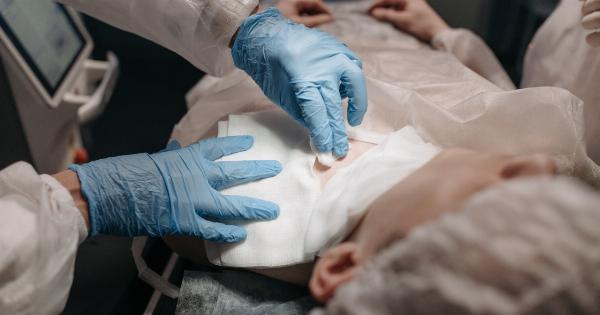Intervertebral disc herniation is a common spinal condition that affects millions of people worldwide. It occurs when the soft center of a spinal disc pushes through a crack in the tougher exterior casing, causing pain and discomfort.
Traditionally, surgery has been the primary treatment option for this condition. However, advancements in medical technology have introduced a minimally invasive, painless, and bloodless treatment option known as Tessys.
What is Tessys?
Tessys stands for “Transforaminal Endoscopic Spine System.” It is a minimally invasive surgical technique used to treat various spinal conditions, including intervertebral disc herniation.
Tessys allows surgeons to access the affected disc through a small puncture hole, avoiding the need for large incisions and extensive tissue damage.
How does Tessys work?
The Tessys procedure begins with the patient lying face down on the operating table. The surgeon inserts a small tube called a cannula into the spine through a tiny puncture hole made in the skin.
Through this cannula, the surgeon passes specialized surgical instruments, including an endoscope and a working channel.
The endoscope is a thin tube fitted with a camera and a light source. It provides the surgeon with a magnified, high-definition view of the spinal structures.
The working channel allows the surgeon to introduce microsurgical instruments to perform the necessary procedures.
Using the endoscope’s visual guidance, the surgeon locates the herniated disc and carefully removes the protruding or damaged material causing the symptoms.
This procedure eliminates the pressure on the nerves and restores proper spinal alignment, providing relief from pain and restoring normal functioning.
The benefits of Tessys
Tessys offers several advantages over traditional open back surgery for intervertebral disc herniation:.
- Minimally invasive: Tessys requires only a small puncture hole, reducing the risk of complications and minimizing tissue damage.
- Painless: The procedure is performed under local anesthesia, ensuring a painless experience for the patient.
- Bloodless: The use of specialized surgical instruments and techniques in Tessys minimizes bleeding during the procedure.
- Rapid recovery: Due to the minimal tissue damage and trauma to the spine, patients who undergo Tessys experience faster recovery compared to traditional open surgery.
- Reduced hospital stay: Tessys is typically performed on an outpatient basis, allowing patients to return home on the same day, eliminating the need for an extended hospital stay.
- Lower risk of complications: Tessys reduces the risk of infection and other surgical complications associated with open surgery.
Who is a suitable candidate for Tessys?
Tessys is an excellent treatment option for individuals diagnosed with intervertebral disc herniation. However, not all patients may be suitable candidates.
Your healthcare provider will assess your condition and determine if you are a suitable candidate for Tessys based on various factors, including the extent of disc damage, overall health, and any underlying medical conditions.
The procedure and risks
During the Tessys procedure, the surgeon makes a small puncture hole in the targeted area of the spine. The surgeon then uses the endoscope and specialized instruments to perform the necessary adjustments and remove the herniated disc material.
While Tessys is considered a safe procedure, there are certain risks and potential complications that patients should be aware of.
Some of the rare but possible risks include infection, bleeding, nerve damage, and allergic reactions to anesthesia or surgical materials. However, the overall risk associated with Tessys is significantly lower compared to traditional open surgery.
Postoperative care and recovery
After the Tessys procedure, patients can generally expect a shorter recovery period compared to traditional open back surgery. However, it is essential to follow your surgeon’s postoperative care instructions for optimal healing and recovery.
These may include:.
- Limiting physical activities that strain the back
- Taking prescribed medications for pain management
- Attending follow-up appointments with your healthcare provider
- Engaging in recommended rehabilitation exercises to strengthen the back and promote mobility
If you experience any unusual symptoms or have concerns during your recovery, you should promptly contact your healthcare provider for guidance.
Conclusion
Intervertebral disc herniation can cause significant pain and discomfort, affecting a person’s quality of life.
However, with advancements in medical technology, Tessys provides a minimally invasive, painless, and bloodless treatment option for this condition. It offers numerous benefits, such as reduced risk of complications, rapid recovery, and minimal tissue damage. If you are suffering from intervertebral disc herniation, Tessys may be a suitable option for you.
























